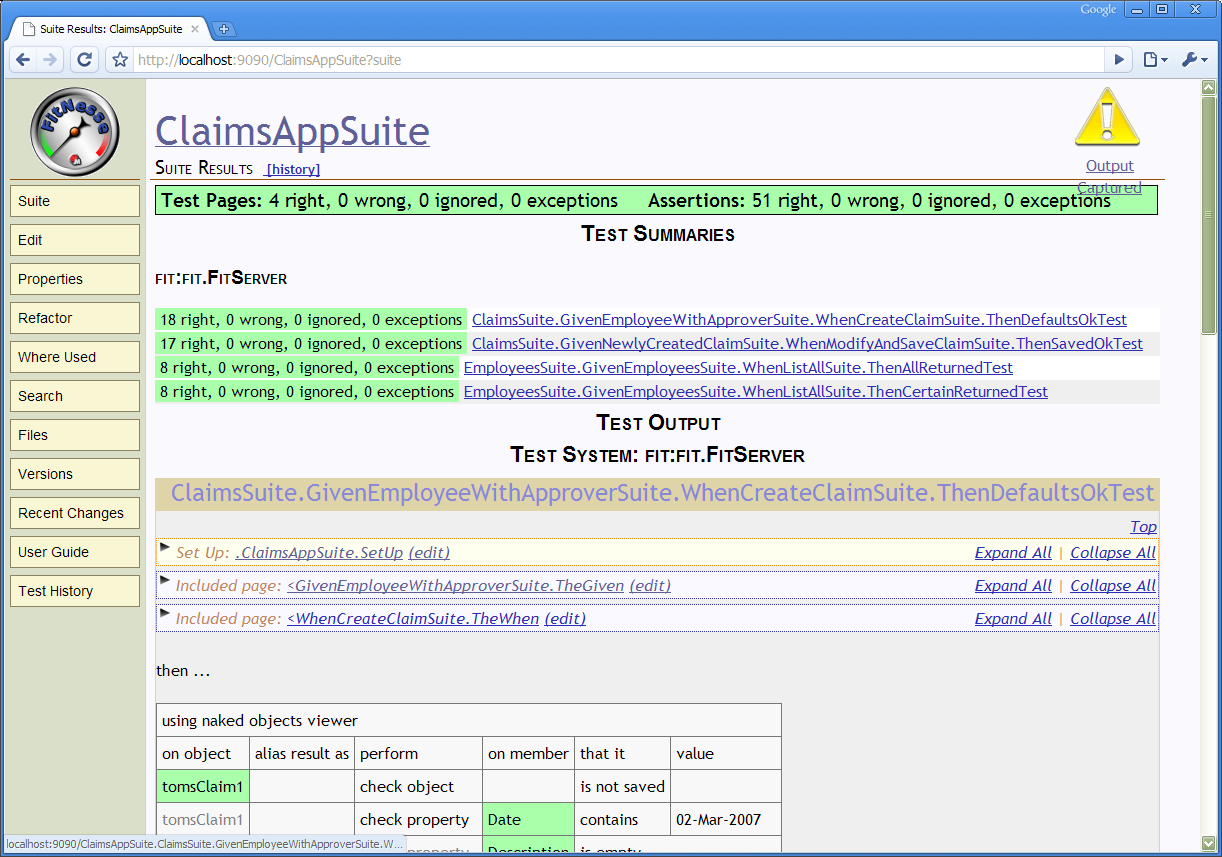FitNesse is an framework to enable scenario testing. It builds upon the earlier FIT framework, which executes tests expressed in terms of tables. FitNesse sits on top of FIT[1], allowing the tables to be written within a Wiki, and spawning off FIT to run the tests. The results of the tests are shown as annotated tests, as shown below.

This makes it easy for non-technical business users to both author new tests, and to view their execution. It also creates an efficient feedback loop; a FitNesse test will "keep on going" even if it hits a failure. Thus the developer can identify several issues and fix them in a single pass.
Another way to think of FitNesse is as a replacement presentation layer, hitting the underlying domain model in the same way that the regular UI would.
If using FitNesse on a "regular" project then the developer writes glue code that in effect take the values out of the wiki page, and use them to interact with the system. They then return a success/failure response which FitNesse then uses to annotate the results page. FitNesse calls this glue code a "fixture". There is some overlap with Naked Objects' own use of that term. However, whereas a Naked Objects fixture is only used to setup the initial state of a test, a FitNesse fixture not only does that but it also is used to execute the test proper.
It is relatively straightforward to integrate FitNesse into a continuous integration environment; see Section 3.9, “Set up Continuous Integration” for further details.